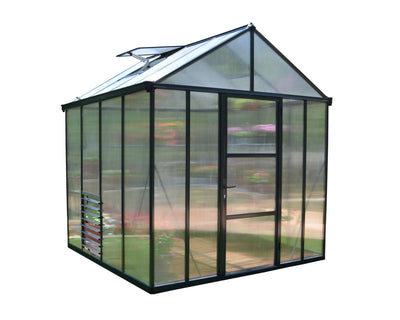Bokashi vs Worm Farm vs Traditional Compost — Which Is Right for You?
Composting comes in many forms, and choosing the right method can make all the difference in how successful, and satisfying, your efforts are. In New Zealand, where space, climate, and food waste types vary widely from household to household, it’s important to understand the strengths and limitations of the three most common composting systems: bokashi bins, worm farms, and traditional compost bins.
Each system suits different lifestyles and garden goals. This guide will help you compare and choose the method that best aligns with your space, time, and the types of waste your household produces.
Traditional Composting – Best for Big Gardens and Outdoor Space
Traditional compost bins are usually kept outdoors and are best suited to larger properties or anyone with a productive garden. These bins break down organic material through aerobic decomposition, a natural, microbe-driven process that needs air, moisture, and time.
Strengths:
-
Handles garden waste, grass clippings, and large volumes of food scraps
-
Produces large amounts of nutrient-rich compost
-
Low-cost to set up, especially if DIY
Challenges:
-
Needs regular turning and moisture management
-
Doesn’t accept meat, dairy, or greasy food
-
Decomposition is slower, especially in winter
-
May attract pests if left uncovered or poorly managed
If you have the space and a bit of time to manage your pile, a traditional compost bin is ideal, especially when combined with a garden.
Worm Farms – Great for Small Households and Quick Results
Worm farms are compact, low-odour systems that use tiger worms to break down food scraps into high-quality compost and nutrient-rich worm tea. These are great for households that mostly produce fruit and veg scraps and want to compost without needing a backyard.
Strengths:
-
Small, neat, and ideal for patios or garages
-
Produces both worm castings and liquid fertiliser
-
Breaks down food quickly (2–4 weeks)
Challenges:
-
Doesn’t accept meat, dairy, or citrus
-
Worms are sensitive to temperature and acidity
-
Needs monitoring to prevent overfeeding or moisture imbalance
Worm farms are perfect for flats, townhouses, and schools, or as a secondary system alongside a compost bin.
Bokashi – Indoor-Friendly and Extremely Versatile
Bokashi bins, for example Green Cone and Green Johanna, use anaerobic fermentation to break down almost all food waste, including meat, bones, dairy, and cooked leftovers. It’s a sealed system kept indoors, often under the sink, and requires the addition of bokashi bran to activate the fermentation process.
Strengths:
-
Accepts food that traditional bins and worms can’t handle
-
Smell-free when sealed and quick to ferment (2–3 weeks)
-
Produces nutrient-rich bokashi juice
Challenges:
-
Requires ongoing supply of bokashi bran
-
Fermented waste must be buried or added to a compost bin
-
Not a full standalone solution unless paired with soil
Bokashi is ideal for households wanting a low-maintenance, space-efficient composting solution for all types of kitchen waste.
What’s the Best System for You?
The right system depends on your waste type, space, and commitment:
-
Have a big garden? Start with a traditional compost bin.
-
Live in an apartment or small space? Try a worm farm or bokashi bin.
-
Produce cooked food and leftovers? Bokashi is your best bet.
-
Want to get the most out of all three? Combine them for maximum efficiency.
Many NZ homes use bokashi for cooked food, worms for fresh scraps, and a traditional bin for everything else , creating a full-circle composting loop.
Explore our composting solutions to find the right system, or get in touch for help matching one to your lifestyle.
















